In our second post on the personal knitting stories of the ‘Fleece to Fashion’ project team, Lynn Abrams remembers a family knitting heritage of dolls’ clothes and much loved skirts that provided a basic appreciation of hand knitting for her future research.
Knitting and knitwear has always been part of my life. As a child of the 60s, my grandmother and mother both knitted for me and my mother taught me to knit. In those days of cheap ready-to-wear clothing, hand-knitted jumpers and cardigans were beginning to be supplanted by machine-made items but one of the strongest memories I have of my grandmother is her knitting ribbed skirts for all her female grandchildren – there are 7 of us. I have been meaning to replicate that skirt ever since. She and my mother also knitted us dolls’ clothes, tiny outfits for Barbies and Tressys.
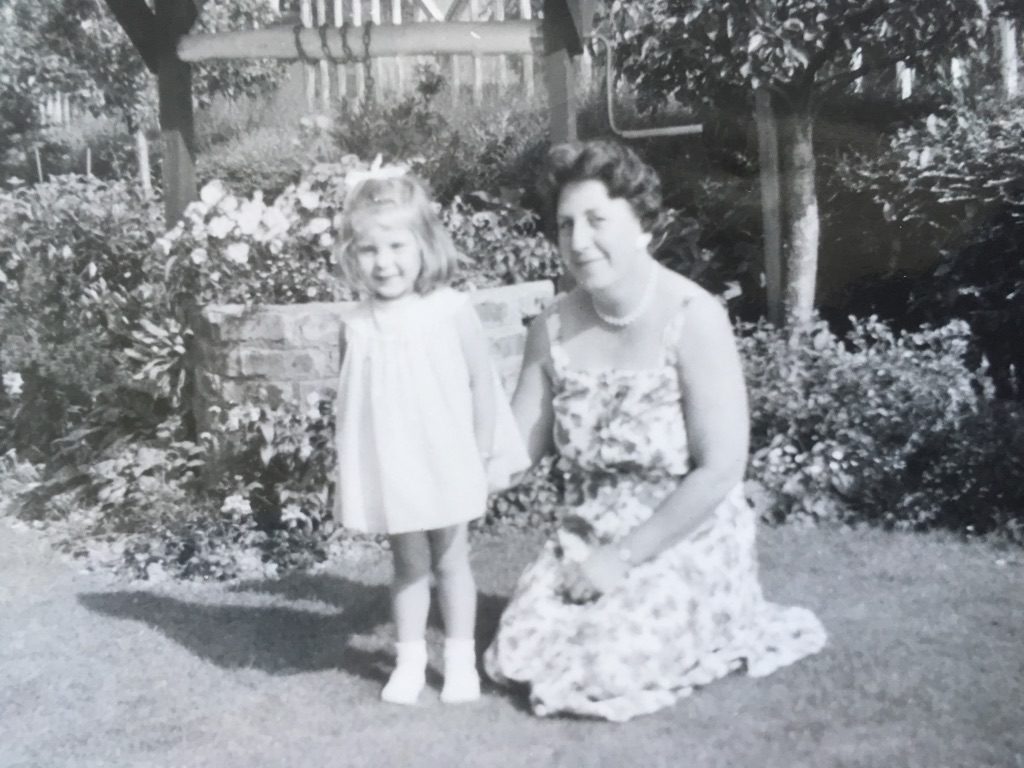
My own knitting history has had its stops and starts. When I was a teenager, the local knitting shop in my suburban neighbourhood of Essex (a sign of the popularity of hand knitting still in the 1970s) started to stock Rowan yarns and patterns. In contrast to what we had been used to, these were exciting and desirable. I knitted my Dad an enormous pullover – probably a Martin Storey chunky cable pattern which I would love to find again. I think Dad only wore it to please me. When I spent a year studying in Germany in 1984 I took up knitting again to pass the time, turning out stripy jumpers including one special request in the colours of the Elephant Hawk Moth for an entomologist.
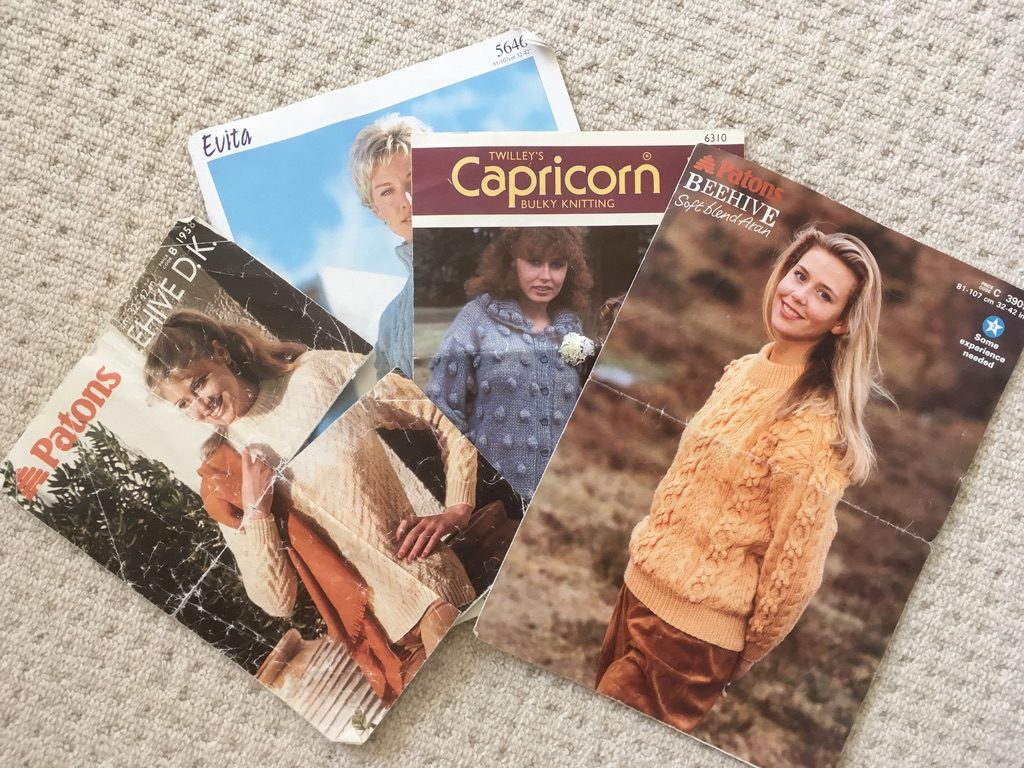
Along the way there have been many mistakes and failures: jumpers knitted in the wrong weight of yarn, to the wrong tension and some dodgy designs. I have kept them all – the finished garments and those that were abandoned part way through, though some have found their way to becoming hanging-basket liners when the moth discovered them.
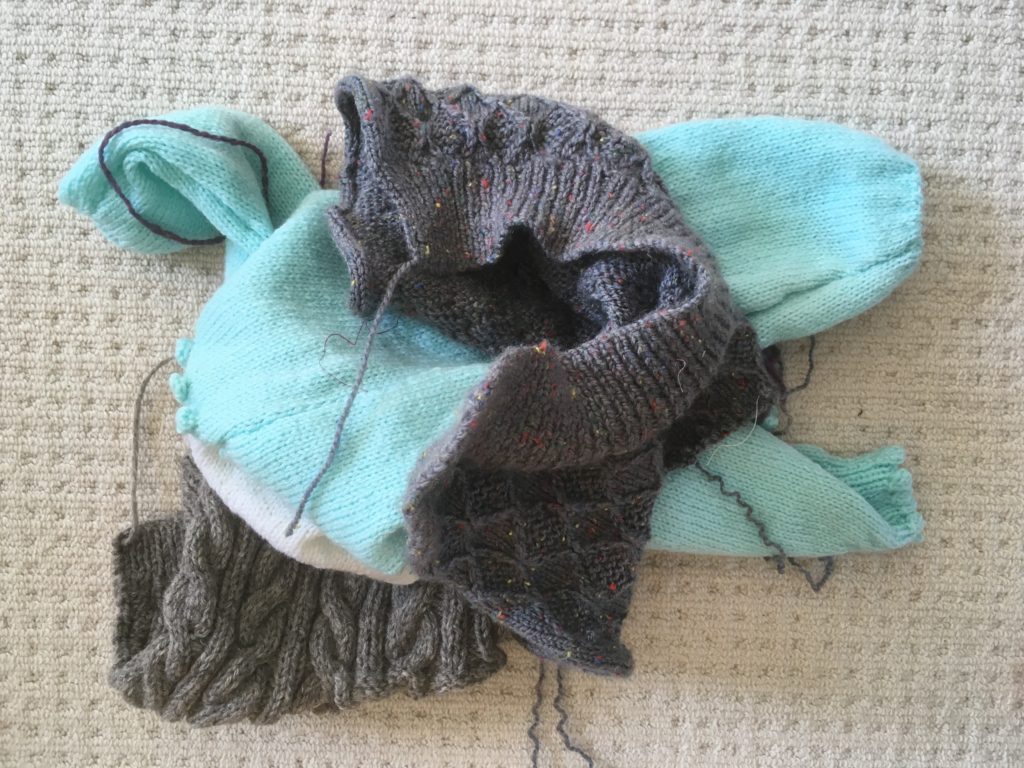
Shetland was a turning point in my knitting journey. In the 2000s I started to carry out research on Shetland women, making a number of trips to the islands, resulting in my book Myth and Materiality in a Woman’s World: Shetland 1800-2000 (2005). Knitting was critical to women’s economic and cultural networks here throughout the nineteenth century and continued to be an important element of the female economy well into the twentieth century. Few households could have survived without the knitting undertaken by women which was commonly exchanged for goods in an exploitative barter-truck system. My interest in Shetland’s history translated into a deeper engagement with the culture of knitting in the past and the present. I returned home after these research trips laden with jumpers and wool and a nascent idea to take the knitting research further.
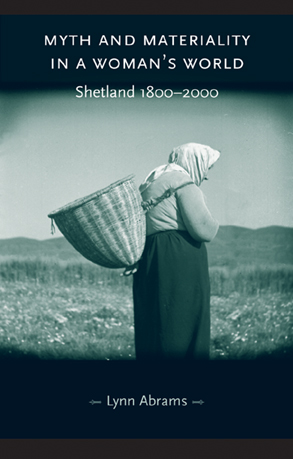
Since then the knitting as a hobby and knitting as research have increasingly merged. At the University of Glasgow colleagues shared my interest at a time when hand knitting was growing in popularity and independent yarn producers, dyers and designers were growing in number. The Fleece to Fashion project – a funded project investigating the history of knitted textiles in Scotland – is the eventual outcome. My own knitting has become more adventurous but my knitting technique is poor – I still have to take my hand away to loop the yarn around the needle which aggravates my neck and my colour stranding leaves the yarns tangled – but for me knitting has always been more about the process than the product. It keeps my hands busy, a productive activity with the benefit of something I might wear or gift at the end of it. Knitting is one of the few things that takes my mind off things, especially a pattern that requires concentration. Academics typically think about work most of the time. When they are not working they think they should be working, so now that my academic research incorporates the study of knitting, my hobby has merged into my work with the benefit that I can always tell myself when I am knitting that I am doing practice-based research!
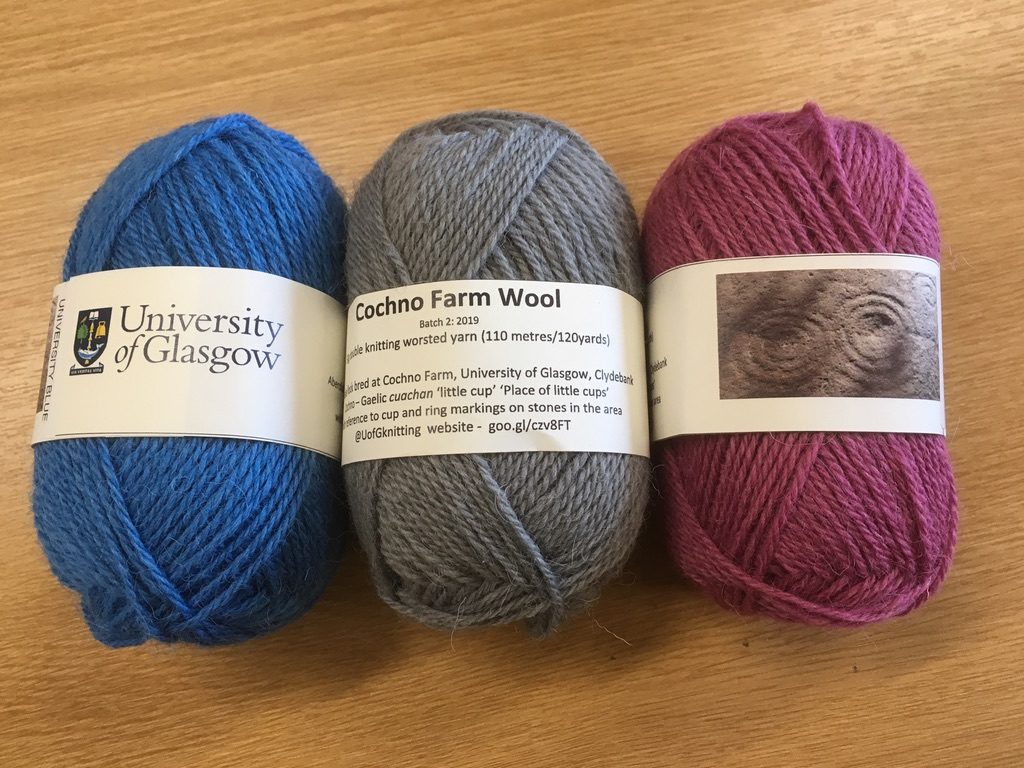

My Covid-19 project was a knitted lace shawl. Some years ago I supervised Roslyn Chapman’s wonderful PhD research on Shetland knitted lace (‘The History of the Fine Lace Knitting Industry in Shetland in the 19th and 20th Centuries’, University of Glasgow, 2015) but I have never attempted this style myself. So it was with some trepidation that I launched into ‘Biblioteca’, a shawl designed by our friend and knitwear designer Kari Westermann (https://www.kariebookish.net/blog) We first met Kari when she was working in the wool and haberdashery section of John Lewis in Edinburgh and we have watched as she has emerged as one of Scotland’s best known designers and much in demand as a teacher at yarn festivals. The shawl was knitted in a lace-weight yarn gifted to me by my neighbour who had purchased it by mistake. I started the shawl while visiting my mum in the south of England just before lockdown commenced and I finished it last week. It’s full of mistakes, the blocking was amateur but it keeps me cosy at my desk and most important, knitting it got me through weeks of anxiety.
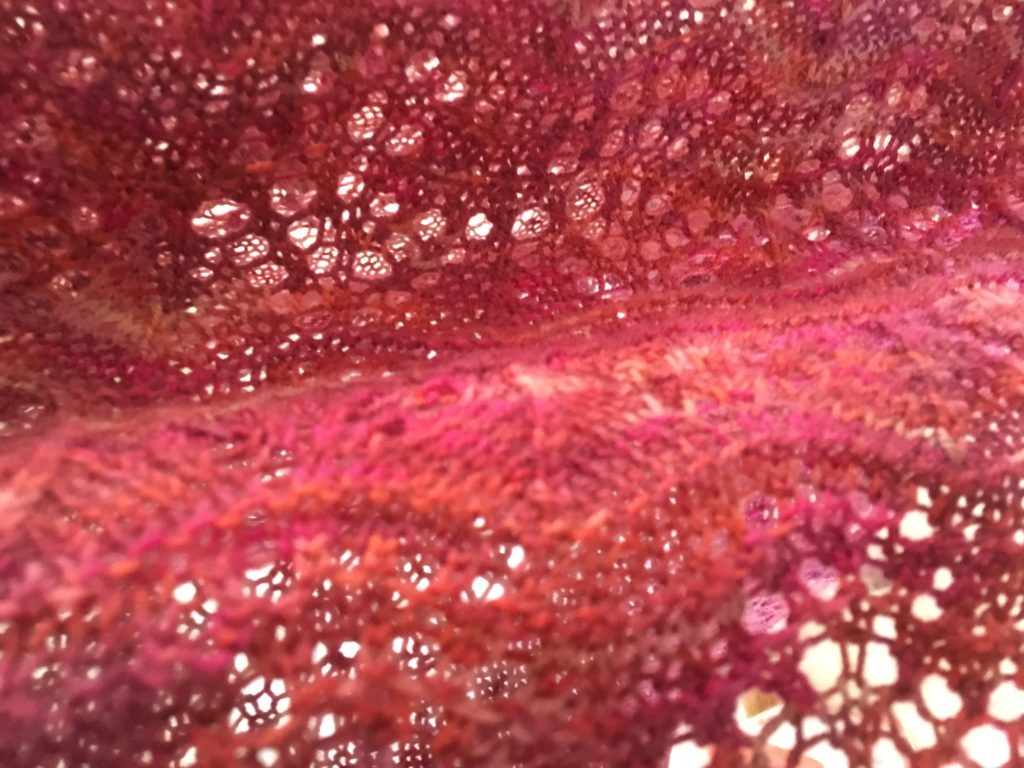
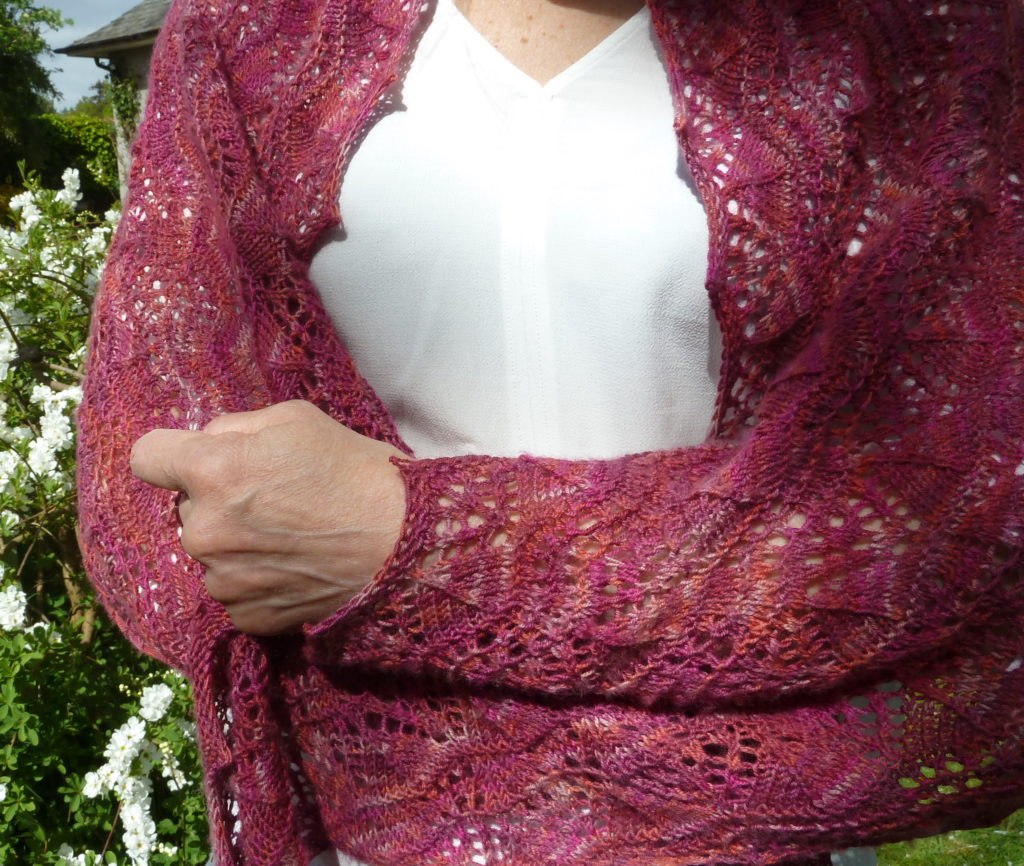
Now we are tentatively coming out of lockdown, maybe I’ll try to replicate my Nanny May’s knitted ribbed skirt and come full circle.

